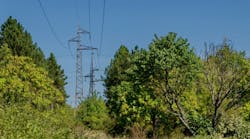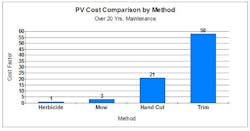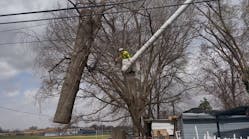If herbicides are currently part of your VM program or you would like to introduce them to the program, the public may ask (and your senior management definitely will), what are the economic benefits of herbicide use?
It is a common question I receive as a consultant to the utility VM industry. Why is that? Shouldn’t it be something that every utility forester knows?
Well, there are a couple of confounding factors. One is a lack of financial knowledge and the other, which is self-inflicted, is a lack of data.
Apples vs oranges
The maintenance-free period for herbicides and the maintenance-free period following manual or mechanical cutting are not the same. Consequently, the cost of one herbicide application versus the cost of cutting the same area once is not a valid comparison. Let’s assume, for example, that based on your average growth rates, you need to apply herbicides every four years but you need to cut only every 12 years. So, you see that there would be three herbicide applications to one cutting operation. The minimum period to be considered, then, is 12 years.
Considering a longer period than the minimum period would be beneficial as the consequences of cutting are very different from those of herbicide applications, particularly if your area has root suckering tree species. Thus, the best case for cutting is the same volume of brush to be cut on subsequent treatments. If you have root suckering species, you may need to apply a multiplier as cutting increases the brush density. Properly selected and applied herbicides serve to decrease the stem density for subsequent applications. Determining the multipliers for cutting versus herbicides requires data but it is not difficult to obtain.
Solved by bean counting
Let’s turn to the financial side. Using the above assumed maintenance regimes it would a good idea to look at maintenance over 24 years. In doing so, you cannot simply use nominal expenses because there is a time value to money. If you gave your VP the option of spending money in year 4, 8 and 12 versus spending nothing until year 12, I think many of you will see there would be a strong preference for the latter. That isn’t necessarily right because the multiple expenditures may actually amount to less in total. The way to compare the expense strings is to bring all the values to a Present Value. Then comparing the Present Value of expenses for herbicide applications versus Present Value of cutting operations provides the Net Present Value.
Back when I came into this industry you had to know the formula for Present Value but lucky for you, since then we have spreadsheets like MS Excel which have imbedded functions for Present Value and Net Present Value. A little reading about these functions should have you capable of performing these calculations.
Providing the Net Present Value of maintenance with herbicides versus cutting may go over big with your VP but will draw blank stares when stated to the public. Providing the dollars per unit for herbicides versus cutting will help somewhat. But I’m going to suggest an approach which I used in my utility days that really highlights the difference – cost factor. I’ve provided a graph using 1993 data, which was the last time I updated the information.
At TransAlta Utilities we used this graph in communicating with landowners to illustrate why we prioritized work in the way we did. It’s simple and readily understood by everyone.
Your mission, should you choose to accept it, is over the next month to produce a graph like this for your system. Keep in mind that a graph like this is only useful if you have the data and calculations to back it up because if it is a fraud, someone will sniff it out and you will realize, as you are wiping the egg off your face, it would have been better to keep it hidden from public view.



